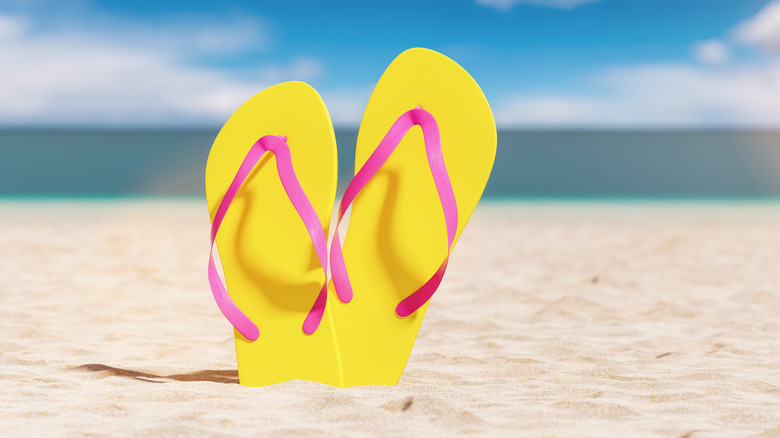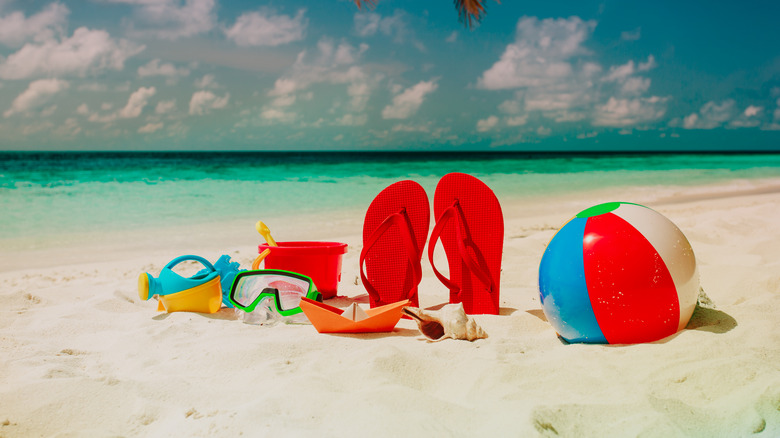The Hidden Dangers Of Wearing Flip-Flops
Each year, many of us get excited to break out our sandals for the warm weather season. But before you slip on your flip-flops and hit the beach, you may want to rethink your footwear choice.
While fashionable, flip-flops can cause some serious issues for your feet. In fact, more than 75% of Americans will experience foot pain in their lives, with podiatrists seeing four times as many women than men for foot issues (via Sharp).
With no protection, no support for your arch, and no cushioning for your feet, this can lead to foot injuries (via Ortho Bethesda). The soles of flip-flops are typically made of rubber, or an alternate thin material that keeps the foot flat. This increases pressure on the foot, leading to foot pain because of the minimal shock absorption.
You also may not realize that your shoe choice can affect your posture. Flip-flops can affect your body's alignment, causing lower back, knee, and hip pain. The Journal of the American Podiatric Medical Association also found that your footwear selection affects your stride length, and wearing flip-flops causes you to take shorter strides than other shoes.
Trade in your flip-flops for alternate shoe options
So now knowing some of the negative effects of flip-flops, how serious are the resulting injuries? Some potential injuries that can occur are sprained ankles, tendinitis, blisters, or foot fungus from exposure to environmental elements. Additionally, balance issues, strained or overextended tendons, shooting pains, and foot swelling can occur (via Ortho Bethesda).
Flip-flops can also be a safety issue not just limited to walking. Driving with flip-flops isn't recommended by experts, as the bottom of the shoe can get stuck under the pedals, potentially causing an accident. Flip-flops can be clumsy, so they're best worn with caution.
Doctors recommend wearing flip-flops only when necessary — such as at a beach, pool, spa, or public shower — and avoid wearing them for hiking or other extensive walking activities. Looking for some other sandal choices? Experts say choosing a sandal with a thicker sole will provide arch support, and choosing a pair with back straps will provide the necessary foot support. Also, be sure the shoe does not bend in the middle (via Sharp).
Hitting the beach with the proper footwear will allow you to still have fun in the sun, while keeping any potential day-ruining injuries at bay.


